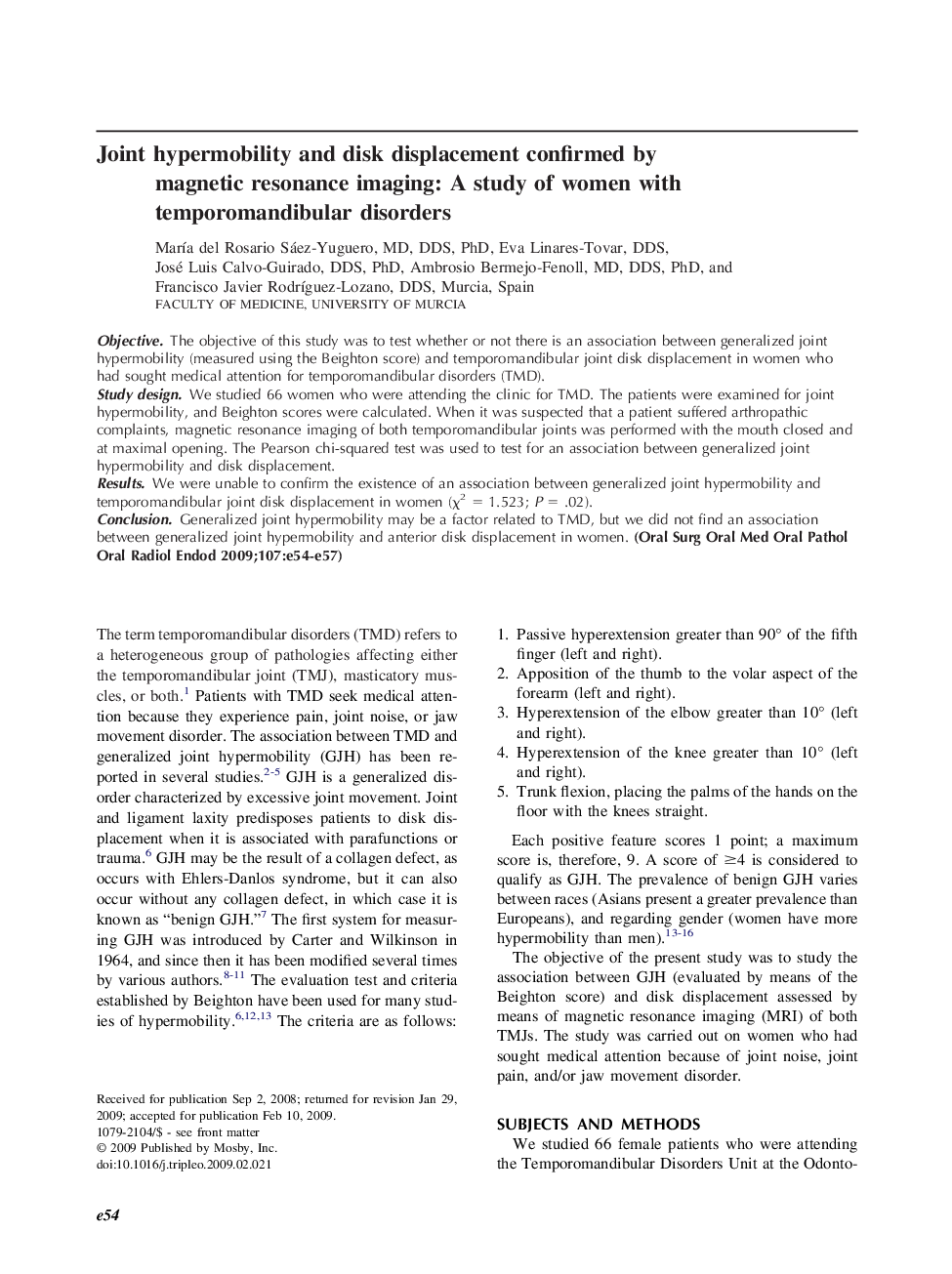| Article ID | Journal | Published Year | Pages | File Type |
|---|---|---|---|---|
| 3168043 | Oral Surgery, Oral Medicine, Oral Pathology, Oral Radiology, and Endodontology | 2009 | 4 Pages |
ObjectiveThe objective of this study was to test whether or not there is an association between generalized joint hypermobility (measured using the Beighton score) and temporomandibular joint disk displacement in women who had sought medical attention for temporomandibular disorders (TMD).Study designWe studied 66 women who were attending the clinic for TMD. The patients were examined for joint hypermobility, and Beighton scores were calculated. When it was suspected that a patient suffered arthropathic complaints, magnetic resonance imaging of both temporomandibular joints was performed with the mouth closed and at maximal opening. The Pearson chi-squared test was used to test for an association between generalized joint hypermobility and disk displacement.ResultsWe were unable to confirm the existence of an association between generalized joint hypermobility and temporomandibular joint disk displacement in women (χ2 = 1.523; P = .02).ConclusionGeneralized joint hypermobility may be a factor related to TMD, but we did not find an association between generalized joint hypermobility and anterior disk displacement in women.
